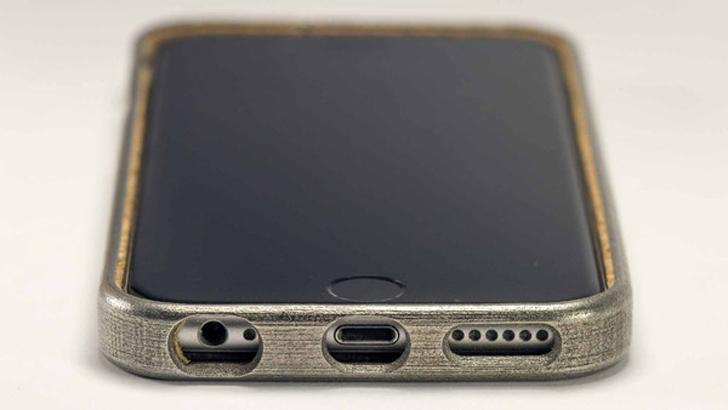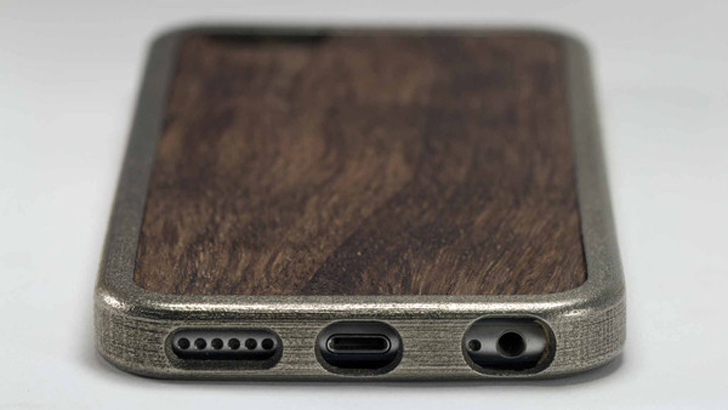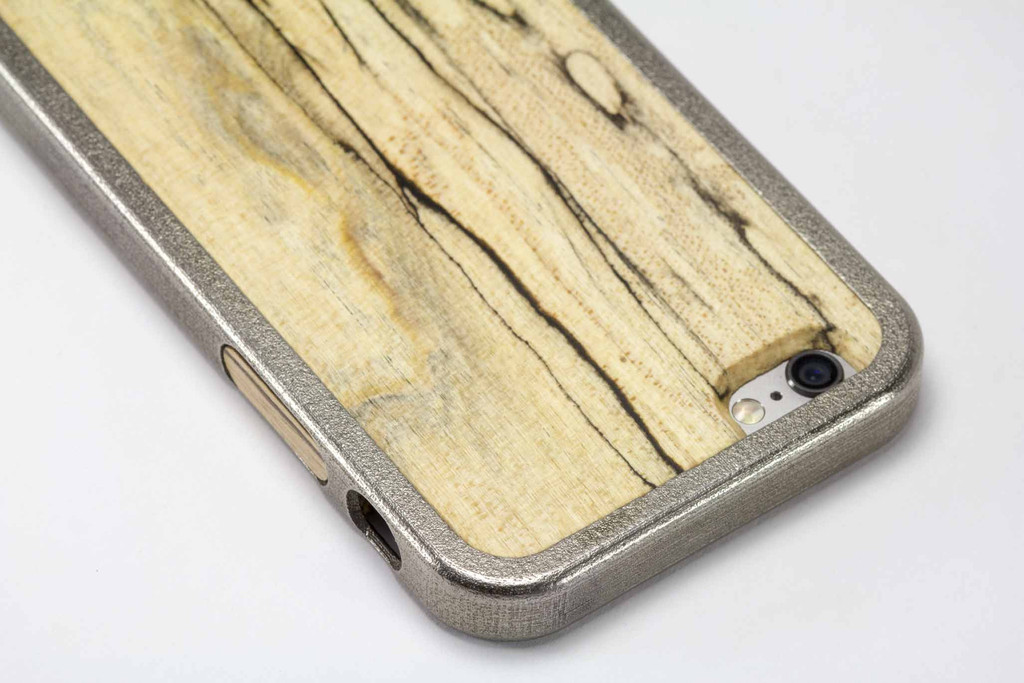3D printed iPhone cases have been around since just about the dawn of desktop 3D printing, but never has a 3D printed smartphone case been as classy as the ALLOY, from KerfCase, made with a combination of natural wood and 3D printed metal. Not only is the ALLOY series among the first, if not the first, line of iPhone cases to be 3D printed in metal, but KerfCase used an industrial-grade 3D printer, typically used for aerospace and biomedical printing, to make it.
Founded by Ben Saks and Dan Lynch, KerfCase grew out of the Carnegie Mellon University’s School of Architecture Wood Shop as a high-end sustainable consumer product company, manufacturing wallets and phonecases handcrafted with reclaimed wood. With their newest ALLOY line of iPhone cases, the duo joins their love of reclaimed wood with metal 3D printed with ExOne‘s binder jetting technology. Typically, ExOne systems are used for industrial purposes, such as large-scale aircraft components or medical implants. In the binder jetting process, metal powders, such as stainless steel, are bound together before being sintered and infiltrated with bronze in a furnace baking process.
For KerfCase, the result is the ALLOY line, which is quite an elegant series of iPhone cases, for the iPhone 6 and 6S. Available in such wood finishes as Maple, Walnut, Bocote, and Spalted Maple and metal finishes that include Polished Nickel, Polished Gold, Black Damascus, and Antique Bronze, ALLOY cases can be customized with laser image or text engravings.
Tom Pasterik, Manager of Business & Process Development for ExOne, says of ALLOY, “It’s exciting to see a direct consumer product that really leverages our technology be adopted into the marketplace. These are the first metal smartphone case designs we’ve seen that are truly functional and ready for production volumes.”

What 3D printing does bring to the table, for KerfCase, may be the ability to produce short runs of metal parts. As a boutique studio, KerfCase may not opt for mass manufacturing via molding because they may not yet have the customer numbers to warrant such a production process. With metal 3D printing, KerfCase is able to maintain a limited stock and produce only on demand, thus being true to their goals of sustainability and reducing the waste that might come with unsold goods. And, for this reason, 3D printing is definitely a perfect technology for the task. And the ALLOY line is only the first KerfCase product to receive the 3D printing treatment. We’re likely to see even more come out of the design studio in the future.




